Understanding Bed Bugs: Survival Without Hosts
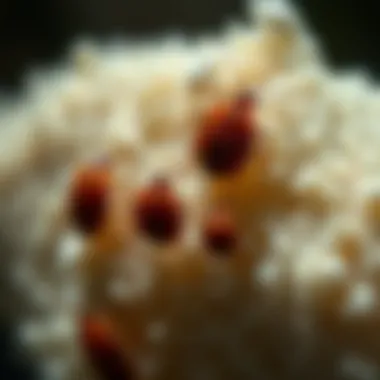
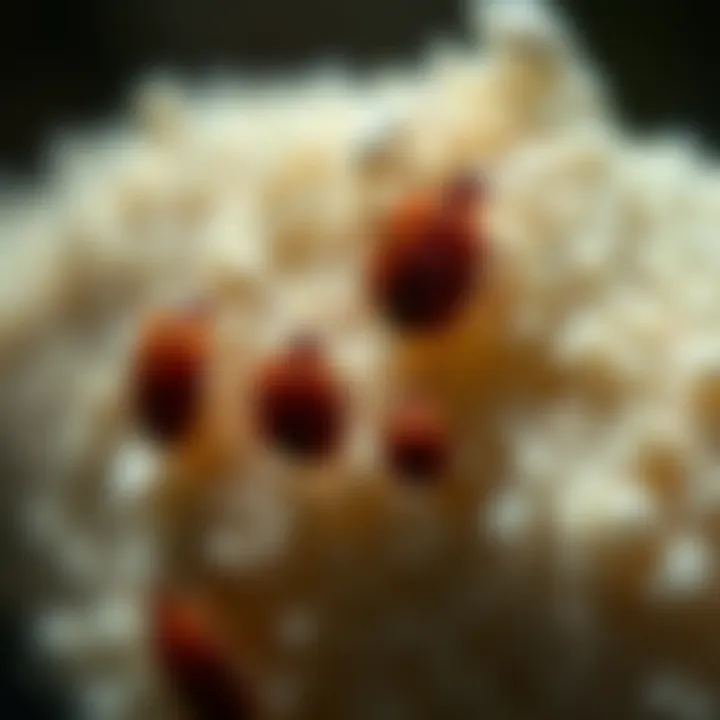
Intro
In the realm of household nuisances, few pests provoke as much dread as bed bugs. These tenacious little creatures have bartered their once-evanescent existence for a somewhat parasitic lifestyle, feeding on human flesh to proliferate. However, there lies a fascinating paradox: bed bugs can survive significant stretches without a host. This article ventures into the intricate world of bed bugs, illuminating their survival tactics during host absence and imparting crucial knowledge for practical pest management.
Understanding how bed bugs endure during times devoid of their preferred meal—humans or animals—could be the key to not just eradicating these pests but preventing their resurgence. The average household may grapple with the aftermath of a bed bug infestation, leading to both financial and emotional strain. Thus, this exploration is both timely and relevant, framing a narrative that intertwines biological intrigue with practical pest control strategies.
As we delve into the life-cycle of these resilient pests, explore their remarkable adaptations, and propose actionable insights for homeowners, a nuanced appreciation can develop—not just for the creature itself, but also for maintaining a pest-free haven.
Understanding Pests
Definition of Pests
Bed bugs are categorized as pests due to their parasitic nature, primarily feeding on human blood. While many insects might carry the 'pest' label because they harm crops or spread disease, bed bugs focus exclusively on latching onto humans for sustenance. Their tiny, flat bodies allow them to hide in tight crevices, often found in bedding, sofas, and even behind wallpaper.
Importance of Pest Identification
Identifying these critters is often the first line of defense against infestations. Misidentification can lead folks astray, allowing the real problem to fester right under their noses.
- Bed bugs are often confused with other insects like fleas or mites.
- Recognizing their distinct reddish-brown color and small, oval shape can be pivotal in swift action.
- Effective identification includes knowing their life stages which range from eggs to adults.
Understanding these elements can make all the difference in the battle against bed bugs, enabling homeowners to take informed action against them.
Prevention Techniques
Home and Garden Preventative Measures
The proactive approach to pest control begins right at home. Simple measures can drastically reduce the chances of bed bugs turning your sanctuary into a breeding ground.
- Regularly vacuuming carpets, furniture, and any crevices where they might hide.
- Using protective covers on mattresses and box springs can keep bed bugs at bay.
- Washing bed linens frequently at high temperatures is another effective method.
In gardens, ensure that outdoor furniture is kept clean. Eliminating clutter where pests might harbor is also sound advice.
Seasonal Prevention Tips
Pest populations can swell during certain seasons, and understanding these cycles helps further.
- Spring cleaning is not just for aesthetics; it’s an opportunity to check for any signs of infestation.
- In winter, using space heaters to eliminate hidden pests in lesser-used rooms could be effective.
Observing these seasonal patterns bolsters your defense against the unwelcome invasion of bed bugs.
Eco-Friendly Pest Control Solutions
Overview of Sustainable Practices
Many households today lean toward eco-friendly solutions that protect the environment while addressing pest problems. Natural methods pave the way for safer living spaces.
- Employ diatomaceous earth, which is an organic matter that dehydrates the bugs.
- Essential oils like lavender and tea tree are known for their insect-repelling properties.
Choosing these sustainable practices promotes a healthier home without compromising on pest control efficacy.
Natural Remedies and Their Effectiveness
Natural methods can be effective, yet they require persistence and a multi-faceted approach.
- Regular maintenance and cleanliness are vital.
- Encourage a culture of vigilance among family members about pest sightings.
"The best way to keep your home free from bed bugs is to stay ahead of them through cleaning and awareness."
By implementing these preventive measures, not only can you gain the upper hand in the fight against these pests, but also contribute to a cleaner, sustainable environment.
Pest control is an ongoing battle, and by arming oneself with the right knowledge and strategies, one can foster a home environment free of these unwelcome guests.
Understanding Bed Bugs
Bed bugs have become a noteworthy concern in many households. It’s vital to understand these pests, not just because they’re an irritant, but due to their complex biology and survival strategies. This understanding can aid homeowners and pest control professionals in developing effective management techniques that can stave off infestations and maintain a healthy living environment.
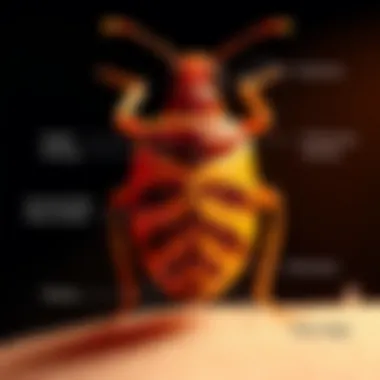
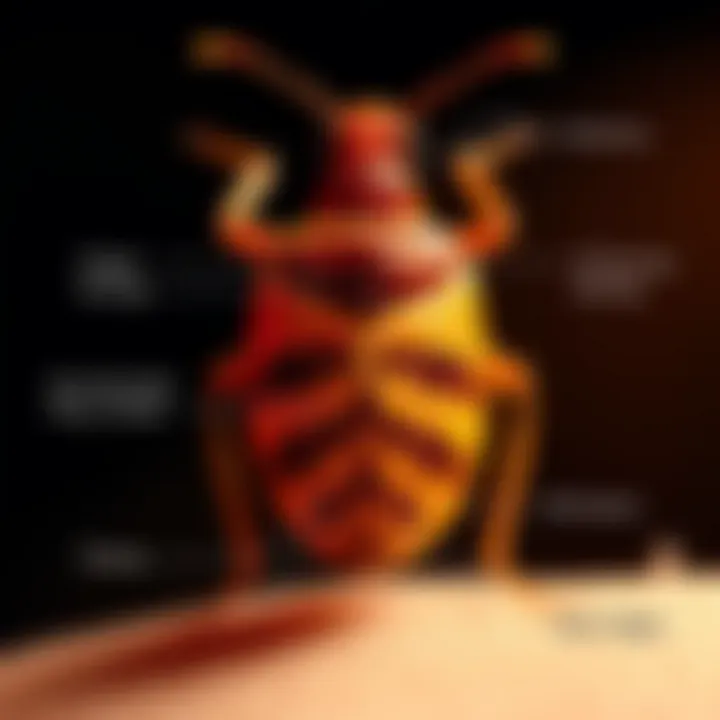
Classification and Biology
Taxonomy and Species Variety
Bed bugs fall under the Cimicidae family, with Cimex lectularius being the most prevalent species affecting domestic environments. This species is notable due to its widespread presence across the globe, making it a primary subject for study in pest management. The taxonomy of bed bugs is not only interesting but essential in understanding their behavior and characteristics, which play a key role in effective control strategies. A unique feature of this classification is the extensive variety of species that can inhabit different ecological niches, each requiring tailored pest control approaches. For instance, Cimex hemipterus, though less common, can thrive in tropical regions. Recognizing the variety aids in figuring out effective eradication methods for specific scenarios.
Physical Characteristics
Bed bugs are small, wingless insects with a flattened body that allows them to hide in tight spaces. They typically measure about 4-5 millimeters in length. The mahogany-brown coloration of an adult bed bug becomes more vivid after a blood meal, giving it a unique appearance. This characteristic serves as a visual cue for identification in potential infestations. Their ability to tuck themselves into crevices makes them exceptionally difficult to locate. This physical adaptability is both a strength and a disadvantage when managing an infestation, as their concealment makes them hard to find without thorough inspections.
Behavioral Traits
Bed bugs are nocturnal feeders, which means they’re primarily active at night. This behavior is essential for their survival as it minimizes encounters with their human hosts. Another interesting trait is their social behavior; they tend to congregate in groups, making it easier for them to feed on their hosts efficiently. While this might seem beneficial, it means that if one bedbug is present, the chances are high that others will be lurking nearby. Understanding these behavioral patterns aids pest controllers in pinpointing the locations where bed bugs are likely to hide and breed.
Life Cycle of Bed Bugs
The life cycle of bed bugs consists of distinct stages, with each stage having its own characteristics and contributions to their overall survival.
Egg Stage
Bed bug eggs are tiny, roughly the size of a pinhead, and are typically laid in clusters, making them easier for pest control experts to spot. Each female can lay up to five eggs per day, significantly contributing to the population explosion in a short time. Recognizing the egg stage is crucial for any pest management strategy, as targeting this stage can prevent future generations from emerging and perpetuating an infestation. The sheer number of eggs produced is a unique feature, posing a challenge for eradication efforts since any missed eggs can lead to a resurgence.
Nymph Stage
Once the eggs hatch, bed bugs enter the nymph stage. These immature bugs resemble adults but are smaller and do not reproduce until they reach adulthood. The nymphs require blood meals to molt into the next stages, which makes them particularly vulnerable to pest control measures. Because they can survive for months without feeding, they pose a persistence problem. The duration of this stage — which can vary based on environmental conditions — presents both advantages and challenges for pest management strategies.
Adult Stage
In the adult stage, bed bugs can reproduce and assert their roles within the environment more effectively. They are adept at seeking out hosts due to their developed senses, particularly sensing carbon dioxide. The adults feed roughly every five to ten days, which underscores the necessity for ongoing vigilance in controlling populations. With their ability to survive in challenging conditions, understanding adult behavior and feeding patterns becomes crucial for anyone dealing with infestations. Addressing the adult population adequately ensures a decrease in reproductive potential and a more manageable pest control scenario.
Host Dependency and Survival
The topic of Host Dependency and Survival is pivotal in understanding how bed bugs manage to thrive, even in the absence of their main food source: blood from hosts like humans and animals. Grasping this concept provides insights into their resilience and adaptability, essential for homeowners and pest control professionals alike. This section will portray the critical aspects of bed bug survival strategies, helping to shape more effective pest management methods.
Nutritional Needs of Bed Bugs
Bed bugs are notoriously known for their blood-sucking habits. However, their nutritional requirements go beyond mere sustenance; understanding these needs uncovers their survival tactics.
Blood Consumption
Blood consumption is the cornerstone of a bed bug's nutritional regimen. This process involves specialized mouthparts adapted for piercing skin and drawing blood. The fact that bed bugs primarily feed on blood makes them particularly reliant on their hosts, presenting a unique survival challenge.
The key characteristic of blood consumption is its richness in nutrients, primarily proteins and amino acids, which are vital for bed bug growth and reproduction. This choice, common among many parasites, stands out in this article due to the immediate access to sustenance it provides bed bugs.
However, this model does come with its disadvantages. Since they require hosts to thrive, their survival is compromised when hosts are scarce, which leads bed bugs to adapt other methods of endurance.
Frequency of Feeding
The frequency with which bed bugs consume blood is another enlightening aspect of their biology. They typically feed every five to ten days, depending on environmental conditions. This strategic feeding cycle ensures that they can maximize their nutrient intake while minimizing exposure to potential threats—human movement, for instance.
The key characteristic here is the periodic nature of their feeding habits, allowing them to conserve energy and resources. This approach proves beneficial for the understanding of their survival, serving as a testament to their evolutionary adaptability.
However, having to feed this often poses a serious disadvantage when hosts are sparse, leading to longer fasting periods that challenge their survival.
Mechanisms for Surviving Without Hosts
While bed bugs are reliant on blood to survive, they have developed fascinating mechanisms allowing them to endure extended periods devoid of hosts. Their survival strategies extend beyond immediate needs, allowing them to weather the storms of scarcity.
Fasting Periods
Bed bugs can enter prolonged fasting periods. When hosts are unavailable, they can survive for weeks or even months with little to no food. This ability to go without a meal allows them to wait for favorable conditions to return. The key characteristic of fasting is the metabolic slowdown that bed bugs can achieve, allowing their bodies to utilize stored energy effectively.
This mechanism is significant for the article as it highlights how bed bugs can outlast situations where hosts are temporarily absent. However, prolonged fasting does make them susceptible to starvation, underscoring the precarious balance between survival and reliance on hosts.
Physiological Adaptations
Physiological adaptations are yet another cornerstone of bed bug survival. Their bodies can withstand fluctuations in temperature and humidity, enabling them to persist in diverse environments. Notably, bed bugs can tolerate extreme temperatures by entering a state of dormancy, which allows them to mitigate the effects of adverse conditions.
This unique feature is essential for understanding how bed bugs remain resilient in the face of host scarcity. The physiological traits they possess equip them to endure long durations without feeding, emphasizing their adaptability. Nevertheless, this flexibility can sometimes backfire if environmental conditions are beyond their tolerance levels.
"Bed bugs' remarkable ability to adapt to environmental changes demonstrates their tenacity as a species, making them a formidable challenge in pest management."
Duration of Survival Without a Host
Understanding how long bed bugs can persist without a host is crucial for both homeowners and pest control specialists. This section examines the elements that affect their survival duration. Knowing these factors can better inform treatment strategies and preventative measures. The longer bed bugs can survive, the more challenging it becomes to eliminate them entirely. This insight can significantly impact pest management effectiveness, helping homeowners take practical steps to mitigate infestation risks.
Factors Influencing Longevity
The survival of bed bugs in the absence of hosts is primarily influenced by environmental conditions. Two significant factors in this equation are temperature and humidity. Each of these variables plays a critical role in determining how long these pests can endure without a meal.
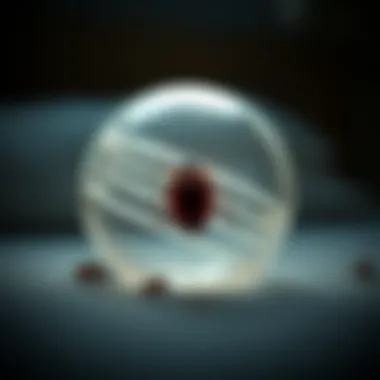
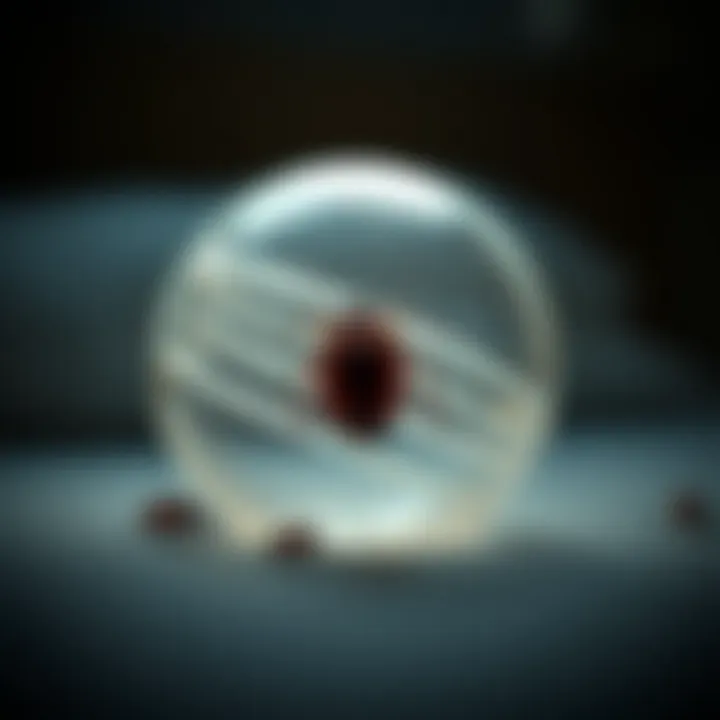
Temperature Effects
Temperature is a big player in the survival game for bed bugs. As ectothermic organisms, bed bugs rely heavily on external temperatures. When temperatures plummet, their metabolic processes slow down, allowing them to stretch their energy reserves. At the same time, extreme heat can also affect their lifespan. A key characteristic is that bed bugs have distinct temperature thresholds. They tend to thrive best in warmer conditions, but if it gets too hot, they suffer and may perish.
- Ideal temperatures for bed bugs typically fall between 70°F and 80°F.
- A notable feature of temperature’s influence is its dual role; in optimal conditions, bed bugs reproduce quickly, while in extremes, they either thrive or die. This duality can be seen as a double-edged sword.
Warm, cozy environments can bolster their populations, but extreme heat or cold can lead to an alarming decline. Hence, controlling room temperatures can be an effective strategy in managing these pests.
Humidity Levels
Humidity plays an equally important role in how long bed bugs can hang around without feeding. Bed bugs prefer humidity levels between 70% and 80%. Too little moisture can lead to dehydration, significantly reducing their lifespan. However, high humidity can promote mold growth, which bed bugs can exploit for sustenance, albeit indirectly.
- A principal characteristic of humidity influence is its necessity for the bed bug's hydration.
- Unique to humidity levels is their role in the actual physical condition of the bugs; insufficient humidity leads to desiccation, compromising their chances of survival.
Understanding how humidity impacts bed bugs clarifies why proper ventilation and moisture control can act as preventative measures in homes. Too low humidity levels can be detrimental for these pests, which can be a helpful tool for those looking to banish an infestation.
Research Findings on Survival Times
To get a clearer picture of bed bug survival times, researchers have conducted various studies in both laboratory settings and the real world. Each context delivers valuable insights but in different fashions. Evaluating both environments helps to create a more holistic understanding of bed bug resilience.
Laboratory Studies
Many studies focused on survival rates under controlled conditions provided valuable baseline data on how long bed bugs can survive without hosts. These laboratory settings allow researchers to manipulate variables tightly, observing responses to specific factors like temperature and humidity.
- A distinctive feature of these studies is the controlled environment, which directly leads to precise outcomes. Researchers can simulate conditions that bed bugs might encounter.
- One advantage of lab studies is the ability to repeat experiments, leading to consistency in data. This reliability can inform further explorations into pest management techniques.
However, a limitation is that lab conditions may not entirely reflect the complexities of real-life scenarios, as bed bugs can adapt to varying environments more easily outside of controlled settings.
Field Observations
In contrast to laboratory studies, field observations gather data from real-world infestations. Understanding survival times in actual homes showcases how these pests endure outside of a controlled environment. Factors like furniture, bedding, and even human behavior all play a role in how long bed bugs can survive.
- A critical characteristic of field research is its authenticity; it provides a glimpse into bed bug survivability as it happens in everyday circumstances.
- Unique to field observations is the ability to monitor bed bug activity and survival in dynamic environments, making them incredibly insightful for real-life pest control strategies.
That said, they can be less precise than laboratory settings. Environmental unpredictability may skew results, but they provide invaluable insight into how bed bugs adapt to their surroundings.
With a solid grasp of these research findings, homeowners can better decipher the longevity of bed bugs, paving the way for effective management and eradication methods.
As we delve deeper into the complexities of bed bug survival, understanding these critical factors can shape how we approach pest control effectively.
Influence of Environmental Conditions
Understanding the influence of environmental conditions on bed bugs is crucial in the examination of their survival tactics. These pests are remarkably adaptable, and their resilience can be analyzed through the lens of temperature and humidity—two key factors that significantly impact their longevity in the absence of a host. By highlighting these elements, we can better understand their capabilities and devise strategies for effective pest management.
Impact of Temperature Extremes
Cold Resistance
One fascinating aspect of bed bug survival is their cold resistance. When temperatures drop, bed bugs can enter a state of dormancy. This ability is vital, allowing them to stretch their lifespans for several months without a blood meal. The key characteristic making cold resistance beneficial is their capacity to tolerate low temperatures, potentially as low as 46°F (8°C).
When bed bugs experience such environmental chilling, they do not die immediately as one might expect. Instead, they enter a sort of suspended animation—functioning at a much slower metabolic rate—waiting for warmer conditions to return. This unique feature serves as an advantage by preventing quick population declines during cold seasons, allowing them to burst forth once temperatures normalize.
Heat Resistance
On the flip side, bed bugs also exhibit remarkable heat resistance. Interestingly, these insects can withstand temperatures as high as 122°F (50°C) for short periods. This survival capability is significant for the overall topic since many pest control strategies utilize heat treatment as an eradication method. The key characteristic that makes heat resistance an important point is that it allows them to endure certain hostile environments that others might find detrimental. Bed bugs have adapted their physiological traits to cope with such extremes, demonstrating a remarkable adaptability. Their ability to withstand high temperatures means that relying solely on heat treatments may not always guarantee eradication, further complicating pest management efforts.
Humidity and Its Role
Optimal Conditions for Survival
Humidity plays an equally crucial role as temperature in the survival mechanisms of bed bugs. Optimal humidity levels, around 70 to 80 percent, promote their overall health and ensure that they can thrive without immediate access to a host. The key to optimal conditions for survival lies in preventing desiccation, which can be lethal for these insects. Under ideal humidity, bed bugs can maintain their body moisture and execute successful molts—crucial for their development.
Without proper humidity, their eggs may fail to hatch, and nymphs may struggle to mature into adults. This reliance on humidity showcases the interdependence of environmental factors and the need to address these issues in pest control strategies.
Dangers of Low Humidity
Conversely, low humidity poses considerable dangers to bed bugs. When humidity dips below 30 percent, the result is often detrimental. Bed bugs may become dehydrated, leading to increased mortality rates. The key characteristic of this vulnerability is particularly alarming for pest management. Understanding that dry conditions can significantly affect their life cycle helps homeowners prepare environments that may reduce bed bug populations. However, finding that balance is also crucial; making spaces too dry can create challenges for human inhabitants as well.
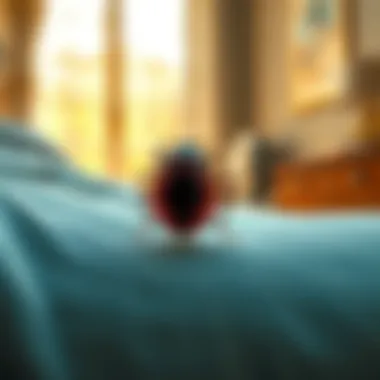

The unique feature surrounding low humidity's impact highlights the sophistication of bed bug survival tactics. In dry environments, they may either lack survivability or flourish; thus, it invites considerations of humidity as a factor in pest control measures.
Managing the environmental conditions in your home not only helps you lead a more comfortable life but also aids in mitigating potential pest infestations.
In summary, the examination of both temperature and humidity reveals how intricately bed bugs adapt to their surroundings. Through understanding these influences, homeowners can make better-informed decisions about pest control that consider not just extermination but the broader environmental context in which bed bugs thrive.
For further insights into the biology of bed bugs and their environmental dependencies, resources such as Britannica and Wikipedia provide extensive information.
Implications for Pest Management
Understanding how bed bugs survive without hosts has profound ramifications for pest control strategies. With their ability to endure extended periods without feeding, strategies must evolve beyond traditional approaches. Pest management becomes a multifaceted endeavor, focusing on both immediate eradication and long-term prevention. Homeowners and professionals need to grasp that controlling these pests requires not only eradicating existing populations but also preemptively addressing conditions that foster their survival.
Moreover, pest management can only be effective if it considers the biology, behavior, and ecology of bed bugs. This holistic understanding enhances the effectiveness of both chemical and non-chemical methods.
Strategies for Effective Control
Integrated Pest Management Approaches
One of the cornerstones of modern pest management is Integrated Pest Management (IPM). This approach emphasizes a comprehensive understanding of insect behavior and life cycles, allowing for tailored interventions.
A key characteristic of IPM is its combination of various techniques to control pests, addressing both immediate and long-term goals. This makes it a popular choice among pest management professionals. Notably, IPM minimizes the reliance on broad-spectrum pesticides, reducing potential harm to the environment and human health.
However, while IPM is effective, it requires significant investment in knowledge and resources, as practitioners must stay updated on the latest research and strategies. A unique feature of IPM is its adaptability, enabling managers to respond quickly to changing pest behaviors, which could be advantageous in combatting bed bugs.
Preventive Measures
Preventive measures are another vital component in controlling bed bugs, focusing on practices that minimize the chances of an infestation occurring. One prominent aspect of preventive measures is regular inspections, which can help identify any early signs of bed bug activity before they escalate into larger problems.
These strategies are beneficial because they promote proactive rather than reactive treatment. The key characteristic of these measures lies in their capacity to create an unfavorable environment for bed bugs, utilizing physical barriers such as mattress encasements and sealing cracks to prevent entry.
However, the downside is that preventive measures require ongoing commitment. Homeowners must remain vigilant and proactive in maintaining cleanliness and addressing potential entry points.
Lessons from Bed Bug Survival
Adaptation Insights
The survival of bed bugs without hosts showcases their remarkable adaptation mechanisms. This insight provides valuable lessons for pest management. One major takeaway is the importance of understanding the bed bug's resilience and how it enables these pests to survive in varied conditions.
A key characteristic of adaptation insights is their ability to inform pest control measures. For example, recognizing that bed bugs can survive without feeding for months can change how often inspections and treatments are performed. This knowledge helps prioritize resources more effectively.
While these insights are beneficial, they also highlight the need for flexibility in pest management plans, as bed bugs can quickly adapt to conventional control measures.
Future Research Directions
Future research directions aim to further unravel the complexities of bed bug life cycles and their survival strategies in uninhabited spaces. The significance of these directions lies in developing innovative technologies and methods to improve bed bug management.
A core characteristic of future research is its potential for creating targeted solutions, ultimately enhancing the durability of pest management strategies. The unique feature of this research is its focus on understanding genetic and environmental factors that contribute to bed bug survival, which can provide insights beyond traditional control measures.
However, these research initiatives can also be resource-intensive, demanding collaboration across multiple disciplines, which may pose challenges but ultimately aims to contribute significantly to effective pest management tactics.
"It is crucial to understand the ecological balance that influences bed bug survival to design more effective pest management strategies."
By grasping the implications of bed bug survival tactics, both homeowners and pest control professionals can navigate the complex landscape of pest management more effectively. This understanding can lead to a more systematic approach, minimizing infestations and enhancing living conditions.
Finales and Future Perspectives
In examining the survival strategies of bed bugs in the absence of hosts, it's incumbent to emphasize that this understanding is not just an academic exercise but carries substantial relevance in the realm of pest control and management. Bed bugs, despite their diminutive size, pose significant challenges, often proving harder to eradicate than one might anticipate. By deciphering the mechanisms through which these pests thrive without food sources, we can arm ourselves with strategies for prevention and treatment.
Summary of Key Findings
The journey through the nuances of bed bug survival has yielded several critical findings:
- Adaptive Resilience: Bed bugs exhibit remarkable adaptability, allowing them to endure long periods without feeding. They utilize various physiological mechanisms to lower their metabolic rate, which extends their lifespan during fasting.
- Environmental Sensitivity: Factors such as temperature and humidity play pivotal roles in their survival. Optimal conditions can significantly increase their longevity, while extremes might precipitate a quicker demise.
- Life Cycle Sustenance: Understanding the structured life cycle—from egg to nymph to adult—helps predict when infestations can proliferate, thereby guiding effective intervention strategies.
These insights illuminate not just the tenacity of bed bugs, but also the importance of holistic approaches to control them. Homeowners and pest control professionals must be armed with knowledge to navigate the challenging landscape of bed bug infestations.
The Importance of Ongoing Research
While the past several decades have contributed substantially to our understanding of bed bugs, the need for ongoing research remains critical. As urban environments evolve and pest populations adapt, staying ahead of these resilient creatures is crucial.
- Innovative Solutions: Continuous research can lead to the development of new and improved pest management strategies, combining biological, physical, and chemical methods. Novel techniques, perhaps leveraging the very survival mechanisms studied today, could pave the way for more efficient control measures.
- Educational Outreach: Further studies also emphasize the need for educating the public—house owners and renters alike—on novel strategies and practices for prevention and management. Awareness of behaviors that foster infestations can change the game.
- Policy Implications: Findings from ongoing research can influence policy development regarding pest control standards in residential and commercial properties, leading to more rigorous and effective management protocols.
Ultimately, the focus on the resilience of bed bugs underscores a larger conversation about human encroachment into natural habitats and the ever-evolving relationship between humans and pests. As we unravel the complex patterns of bed bug survival, we not only enhance our pest control arsenal but also gain a profound appreciation for the resilience found in nature.



